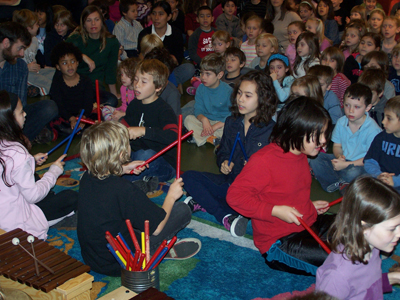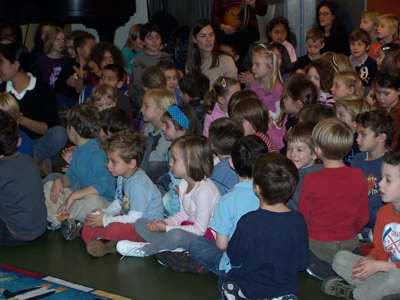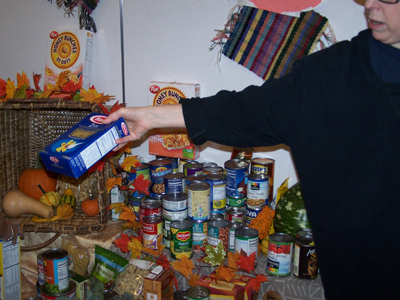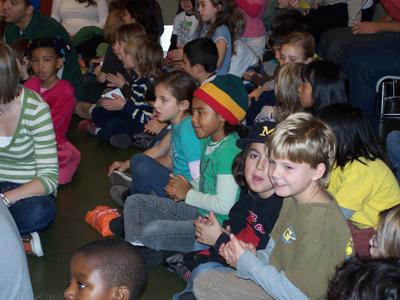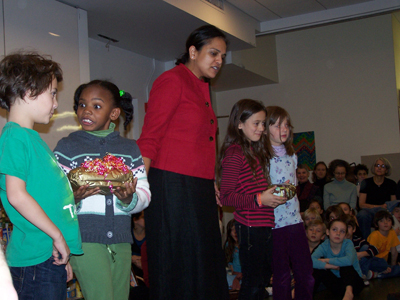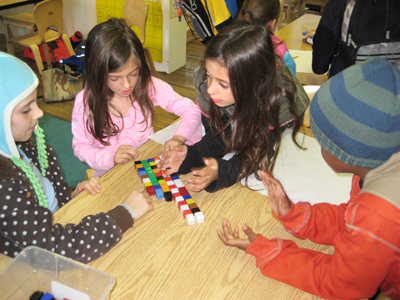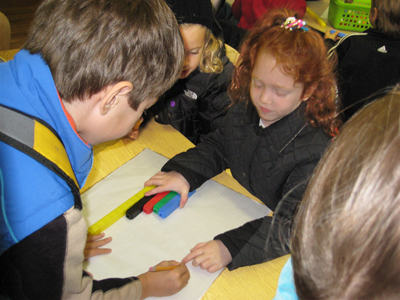Fourth Grade Immigration Simulation
“Activating the affective domain is a key to learning,” is educational jargon for “if you feel something, you remember it and understand it so much more.” This is an important principle that our teachers understand very well and employ often as they strive to make the classroom and the learning that happens there enjoyable. From creating community, to talking out our differences, to math games, to buddies, to baking, to building things – enjoyment is an under-girding principle to many projects.
But the inverse is also true, and once in an extremely great while, unpleasant emotions, even stress, can be invoked to make learning come to life. The fourth graders experienced this earlier this week during their “Immigration Simulation.” On Monday fourth grade teachers and other adults they recruited from the around the school re-created a simulated U.S. immigration experience of long ago for “newly arrived” immigrants (fourth graders) from various countries. The fourth graders, dressed in various garb and costumes for the occasion, ran the gauntlet of lines, waiting rooms, legal document check points, passport controls, and health officials that many immigrants faced as they passed through the Ellis Island immigration process. What an experience! I felt compelled to ask several fourth graders the next day if they were over the trauma (luckily they were), because I knew how seriously we’d all acted as “officials.”
Studying the lives of ordinary people in history (in contrast to the “great man [sic]” theory or approach) is also a cutting edge, progressive approach to history at the university level these days. It’s even more powerful when combined with a simulation experience that allows students insight into and appreciation of the human experience. Enjoy the small sampling of fourth grade photos below.
May your family’s holiday break be filled with nothing but pleasant, warm, happy correlations to the affective domain! See you in the new year!
Sincerely,
Namita

Waiting in line…

…more waiting in line…

…still waiting in line!

Having documents inspected…

…and then on to the Medical Inspection station.

Buying a lottery ticket.

At last, taking the oath of allegiance!
